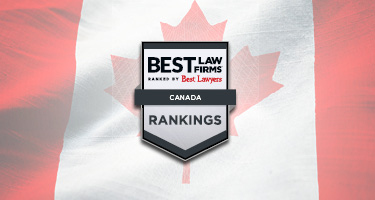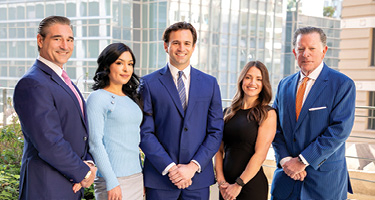For in-house counsel, the billable hour is a bit like fruitcake during the holidays—a little hard to swallow and it keeps turning up year after year.
Consider: In 2003, a top Silicon Valley in-house counsel declared to The Recorder newspaper in San Francisco that “the days of blank checks are over” and called on law firms to embrace alternative billing arrangements. It was just one example of the growing movement at that time by corporate legal departments to trim expenses by exhorting firms to move away from an hourly pricing structure.
How much has changed over the last two decades? A few weeks ago, The Wall Street Journal reported that “big companies around the world are pushing back against rapidly rising legal bills, railing against hourly lawyer rates they say are the product of law-firm excess.” Citing data from Wells Fargo’s legal specialty group, the Journal noted that hourly rates had risen 9% in the first half of the year and 8.3% in 2023.
It begs the question: After decades of public pressure from in-house leaders, are law firms actually failing to offer alternative billing arrangements to their clients? If they are offering billing options, is the menu of choices so limited that in-house teams feel compelled to stick with hourly fees?
Every year, as part of its annual rankings process, Best Law Firms® surveys thousands of firms across the United States. In its latest survey, firms were asked whether they offered alternative billing arrangements, as well as the types of arrangements they negotiate with their clients. Their answers may provide a more nuanced picture of how deeply alternatives to the billable hour have become entrenched in U.S. law firms.
Alternative Fees Abound
Best Law Firms’ first question was straightforward: “Does your firm offer alternative billing arrangements?”
Overall, 4,019 law firms answered this question and the vast majority, 73%, said “yes” they do offer alternative billing arrangements to their clients. While the number of firms responding to this question rose by more than 10% this year, the percentage of firms offering alternatives to hourly billing is nearly identical to Best Law Firms’ 2023 survey.
Larger firms have higher adoption rates than smaller firms. Among firms with more than 20 lawyers, 85% are offering alternative billing arrangements. If only firms with more than 100 lawyers are considered, the rate rises to nearly 90%. Among law firms with fewer than 20 lawyers, alternative fees are still exceptionally common. Seventy percent of small firms said they are willing to negotiate billing options with their clients.
When three-quarters of U.S. firms are doing something, at what point does alternative become standard operating practice?"
No matter where in the country a client may be located, they are likely to find that most firms offer alternative billing options. The numbers are highest in the Mid-Atlantic states, where 78% of firms surveyed said they offered alternative fees. Firms in the Southeast had the lowest adoption rate, 68%. The numbers in these markets may have something to do with the mix of respondents. Global and national firms based in three of the country’s largest legal markets—New York, Washington, D.C. and Philadelphia—were counted in the Mid-Atlantic zone. The Southeast includes a number of states with less-populated legal markets and smaller law firms.
The survey results demonstrate that the billable hour is alive and well and that a quarter to one-third of firms are still using it exclusively.
Nevertheless, adoption rates for alternative billing arrangements are robust—so much so, in fact, that one wonders if they can be considered “alternative” at all. When three-quarters of U.S. firms are doing something, at what point does alternative become standard operating practice?
Types of Billing Arrangements
In a second survey question, Best Law Firms asked firms “which alternative billing arrangements does your firm offer?” and supplied a list of options from which firms could choose. Firms were also invited to provide other arrangements if those listed did not apply. The options offered were:
- Blended hourly rates: A firm charges a single hourly rate for all lawyers on a matter.
- Capped fees: The firm agrees its pricing will not exceed a maximum amount.
- Collared fees: A client agrees to pay hourly rates within a range. Rates decrease if billable hours exceed the upper end of the range.
- Contingency fees: Fees are paid only in the event of a successful judgment or settlement, usually a percentage of the amount awarded.
- Discounts for a large number of billable hours: A firm reduces its rates if a client commits to a large volume of legal work.
- Fixed fees: Firms agree to the price of a specific matter prior to an engagement.
- Flat fees: A predetermined amount is charged for certain services, often routine or standardized legal matters.
- Hybrid fees: Firms charge billable hours for a portion of their work and offer an alternative fee (capped, flat, contingency) for the rest.
- Retainers: Clients make an upfront payment. Firms draw upon this amount as they do their work.
- Other: A handful of firms provided other arrangements, including success or bonus fees based upon performance; discounts for clients who pay their bills quickly; reduced fees for pro bono clients, nonprofits, artists and arts organizations; and monthly subscription models, which offer clients a suite of legal services for a flat monthly fee.
Of the 3,000 firms that said they are offering alternative billing arrangements, nearly 2,800 provided a list of the types of fee arrangements they are offering.
The Most Common Approach
Flat fees are, by far, the most common type of alternative arrangement on offer, the survey results show. Just under 70% of firms said clients could negotiate a flat fee for a portion of their services. In every region and among firms of every size category, flat fees ranked first among the types of arrangements they offered.
One of the benefits of hourly billing is that it is an easy concept for law firms to explain to clients. The firm will charge a rate depending on how much time a lawyer spends on a matter. A flat fee is similarly clear-cut: The client pays a single fee for a particular type of work.
No matter where in the country a client is located, they’re likely to find a firm offering alternative billing options."
For in-house teams, flat fees can provide greater certainty in the budgeting process. An hourly bill, by contrast, may vary in size, depending on the complexity of a matter. That said, a flat fee engagement can be a big-ticket item that must be sold to the C-suite. This can prompt in-house leaders to revert to the devil they and their business colleagues know—billable hours.
On the law firm side, flat fees reward efficiency. Unlike the billable hour, the less time spent on a matter, the more profitable it becomes. On the downside, firms may be left holding the bag if a matter is unpredictable and they are forced to spend more time on it than anticipated.
How Other Fees Fare
While the term “fixed fee” is often used interchangeably with “flat fee,” Best Law Firms broke out the two separately in its list of billing arrangement options. This reflects a certain amount of nuance in the descriptions of each. Fixed fees refer to an advance agreement for a matter—say, a piece of litigation. Flat fees are for a type of work that can span a range of matters. For example, a firm may charge a flat fee for drafting contracts or registering and maintaining a client’s trademarks. However they are defined, fixed fees are being offered by 34% of the firms who provided data.
Two other arrangements—contingency fees and blended hourly rates—are being offered by more than 50% of the law firms responding. More than 40% are deploying retainers and discounts based on volume. Capped fees are on the menu of options at 38% of firms. Hybrid fees and collared fees are less popular. Just 17% of firms said they negotiated hybrid fees with clients and 3% are agreeing to collared fees.
While the smallest firms surveyed are somewhat less likely to offer alternative billing, when they do, the variety of options is often greater than at larger firms. On average, firms with fewer than 20 lawyers offered 5.4 alternative fee options to their clients. The averages declined as firms grew larger: Firms with 20-50 lawyers provided 4.6 options; in the 50-150 range, 4.4; and more than 150 lawyers, 4.1.
Big Law and Billable Hours
The decreasing array of billing options among larger firms tracks with complaints general counsel and chief legal officers routinely level at Big Law. The billable hour, as The Wall Street Journal reported, is driving double-digit revenue growth at the largest firms this year and hourly rates for top lawyers at the largest firms have reached $2,500 an hour.
That’s great for big firms and star lawyers. But for in-house counsel facing ever greater pressure to control costs, the billable hour seems likely to work against their interests. From their perspective, hourly billing incentivizes lawyers to spend more time on a matter and to charge rates based upon the person doing the work rather than the complexity of the task.
Yet, many companies are still paying the full sticker price.
As we noted with flat fees, in-house counsel may be concerned about selling to their business colleagues a new fee structure that requires more upfront investment. In bet-the-company scenarios, they may be unwilling to risk sending work to a new or smaller firm.
Nonetheless, midsize firms and practice-specific boutiques would appear to have significant opportunities to attract new business. As the Best Law Firms survey shows, smaller and midsize firms with alternative billing arrangements are more likely to offer a wider array of options and a more flexible approach.
One general counsel who has moved work to smaller firms told the Journal, “You can get the same kind of quality for half the rate.”
AI's Potential Impact
Looming over all current discussions of the billable hour is artificial intelligence. Last year, Goldman Sachs issued a report noting that 44% of tasks performed in the legal industry could be automated by generative AI and nearly 40% of legal market jobs could be replaced by AI-driven automation. More than half of current billable hour work may be subject to automation.
This has, of course, unleashed speculation about the future of the billable hour. If AI is performing a task in seconds that once took a lawyer hours to do, how will a firm be able to justify billing at traditional hourly rates?
Some see flat fees as an answer.
As the Best Law Firms survey demonstrates, flat fees are already on offer at the majority of firms and are the most popular alternative fee option. They may become even more ubiquitous because they offer law firms the same kind of budgeting certainty that make them attractive to clients.
In an interview with Legal IT Insider, the Goldman Sachs lawyer who led last year’s AI report said, “the certainty of flat fees is something that you can build into your strategy. Also, if you give me something faster and of a higher quality I will pay extra.”
Others see flat fees and other alternative arrangements as elements of a pricing model that values results over billable hours. In this way, as one legal business strategist recently wrote, “firms can offer more transparent and predictable pricing structures, improving client satisfaction.”
Will AI kill the billable hour? Clearly, the jury is still deliberating.
The Goldman Sachs report noted that AI, while disruptive, would be a complementary technology to legal professionals rather than a replacement for them. It’s also worth remembering that technology-related challenges have arisen before. Like the holiday fruitcake we mentioned, the billable hour has remained largely untouched.
Even so, the survey results demonstrate that most law firms are open to alternative billing arrangements and are providing an array of options to clients. In-house counsel may simply need to cast a wider net to find firms that will provide greater billing flexibility.
Click here to read the full Best Law Firms Legal Market Report 2025.
David L. Brown is a legal affairs writer and consultant, who has served as head of editorial at ALM Media, editor-in-chief of The National Law Journal and Legal Times and executive editor of The American Lawyer. He consults on thought leadership strategy and creates in-depth content for legal industry clients and works closely with Best Law Firms, as senior content consultant.














